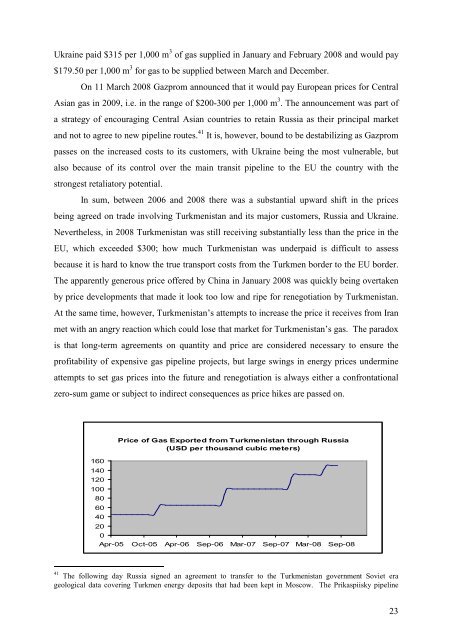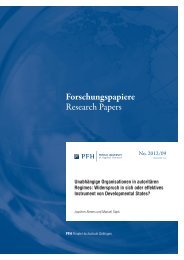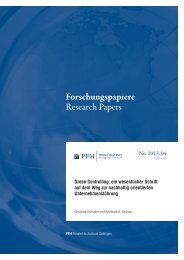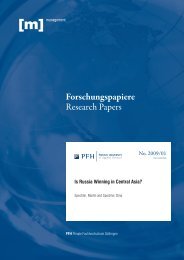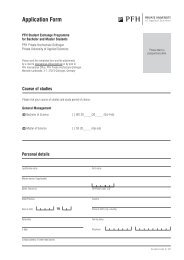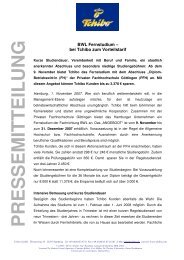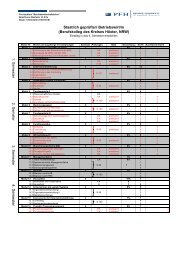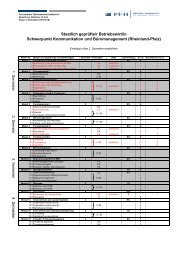Forschungspapiere Research Papers - PFH Private Hochschule ...
Forschungspapiere Research Papers - PFH Private Hochschule ...
Forschungspapiere Research Papers - PFH Private Hochschule ...
Create successful ePaper yourself
Turn your PDF publications into a flip-book with our unique Google optimized e-Paper software.
Ukraine paid $315 per 1,000 m 3 of gas supplied in January and February 2008 and would pay<br />
$179.50 per 1,000 m 3 for gas to be supplied between March and December.<br />
On 11 March 2008 Gazprom announced that it would pay European prices for Central<br />
Asian gas in 2009, i.e. in the range of $200-300 per 1,000 m 3 . The announcement was part of<br />
a strategy of encouraging Central Asian countries to retain Russia as their principal market<br />
and not to agree to new pipeline routes. 41 It is, however, bound to be destabilizing as Gazprom<br />
passes on the increased costs to its customers, with Ukraine being the most vulnerable, but<br />
also because of its control over the main transit pipeline to the EU the country with the<br />
strongest retaliatory potential.<br />
In sum, between 2006 and 2008 there was a substantial upward shift in the prices<br />
being agreed on trade involving Turkmenistan and its major customers, Russia and Ukraine.<br />
Nevertheless, in 2008 Turkmenistan was still receiving substantially less than the price in the<br />
EU, which exceeded $300; how much Turkmenistan was underpaid is difficult to assess<br />
because it is hard to know the true transport costs from the Turkmen border to the EU border.<br />
The apparently generous price offered by China in January 2008 was quickly being overtaken<br />
by price developments that made it look too low and ripe for renegotiation by Turkmenistan.<br />
At the same time, however, Turkmenistan’s attempts to increase the price it receives from Iran<br />
met with an angry reaction which could lose that market for Turkmenistan’s gas. The paradox<br />
is that long-term agreements on quantity and price are considered necessary to ensure the<br />
profitability of expensive gas pipeline projects, but large swings in energy prices undermine<br />
attempts to set gas prices into the future and renegotiation is always either a confrontational<br />
zero-sum game or subject to indirect consequences as price hikes are passed on.<br />
160<br />
140<br />
120<br />
100<br />
80<br />
60<br />
40<br />
20<br />
0<br />
Price of Gas Exported from Turkmenistan through Russia<br />
(USD per thousand cubic meters)<br />
Apr-05 Oct-05 Apr-06 Sep-06 Mar-07 Sep-07 Mar-08 Sep-08<br />
41 The following day Russia signed an agreement to transfer to the Turkmenistan government Soviet era<br />
geological data covering Turkmen energy deposits that had been kept in Moscow. The Prikaspiisky pipeline<br />
23


